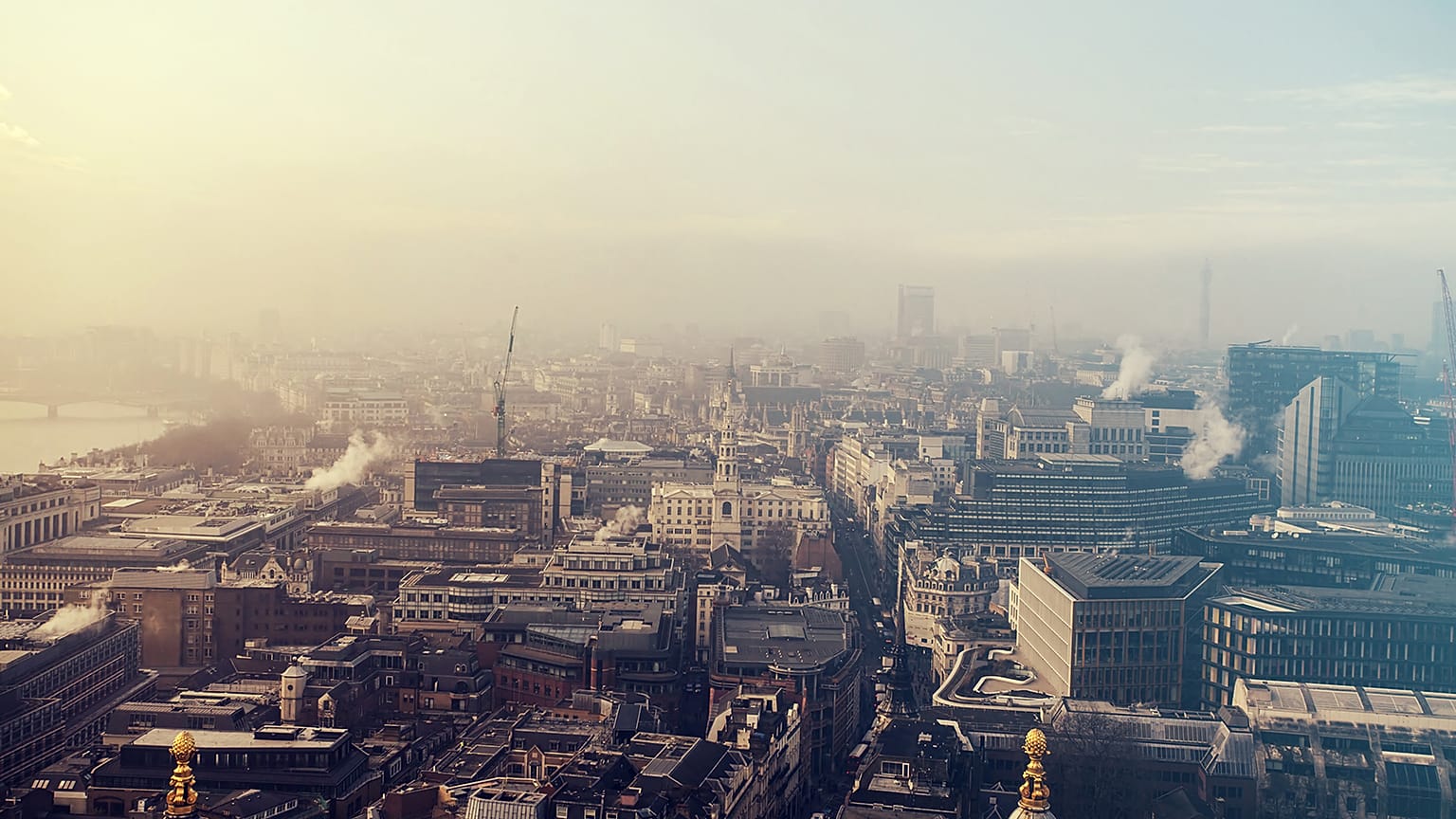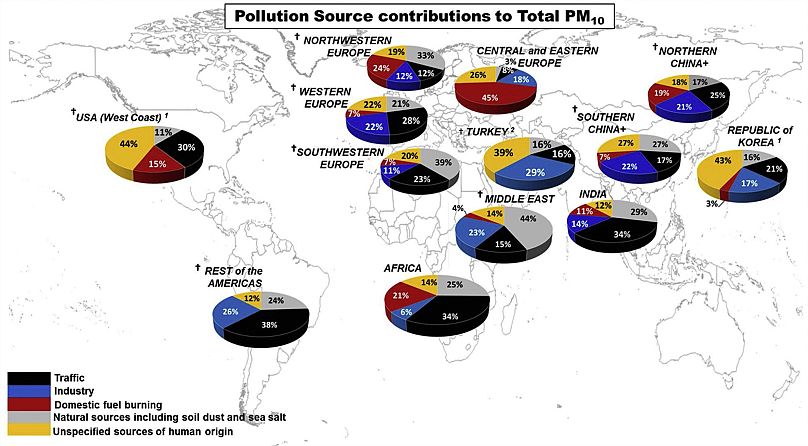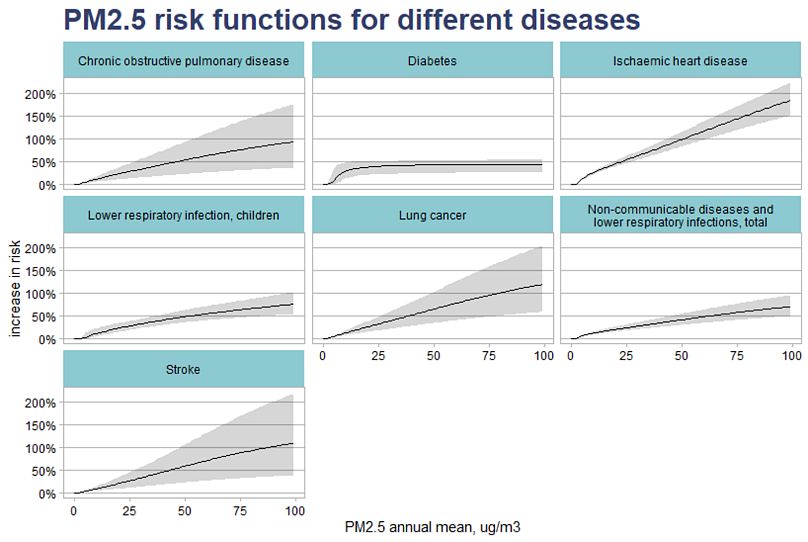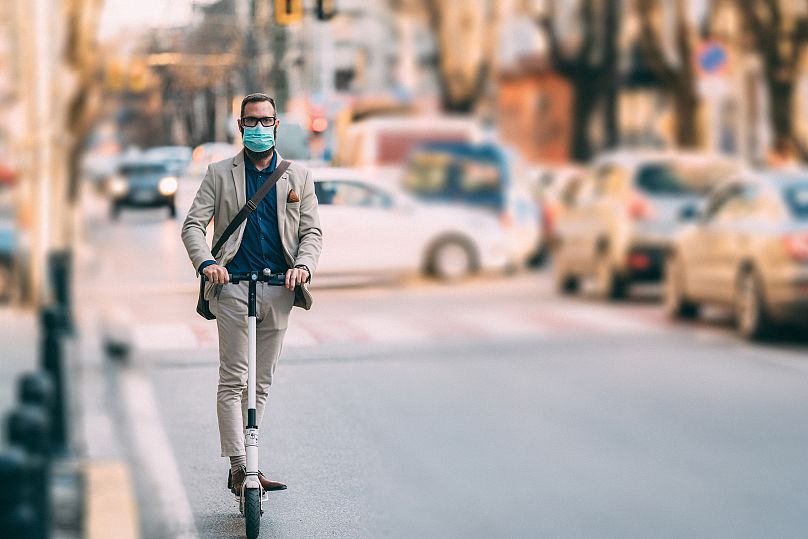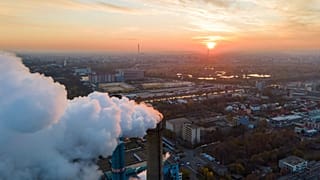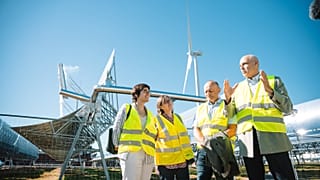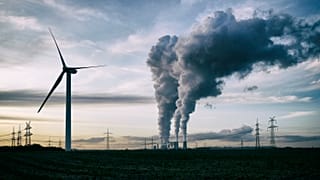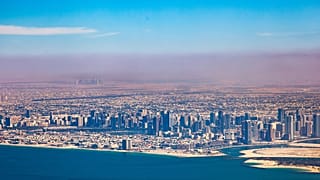Mounting concerns about public health are pushing cities to scrub their air clean. But just how easy is breathing fresh air again?
Italy’s economic powerhouse hadn’t felt so clean in years. As the novel coronavirus put the country and the hard-hit region of Lombardia under lockdown, muting the human and economic buzz, it also unlocked an unlikely reality: cities with better quality. Above the Earth, satellites confirmed the slash in air pollutants, as they took snapshots of the region’s clearer skies, including Milan’s, infamous for its dangerous air pollution levels, just as many other places in the world. This March, nitrous oxide was down 38%, particulate matter 14%, and benzene 33% lower, compared to the same month between 2016-2019, data from Lombardia’s environment agency showed.
Madrid, Lisbon, and other cities in Europe also breathed fresher air through their lockdowns. But this silver lining to the global health emergency turns to be short-lived as air pollution is bouncing back once urban economies restart. Cities have been investing to become greener for decades, with mixed results; now, added concern of how dirty air could worsen the spread and fatality of diseases is giving a new push to clean up urban air quickly.
“Air quality has significantly improved since the 1970s”, says Dr. Vincent-Henri Peuch, Director of the Copernicus Atmosphere Monitoring Service (CAMS). “EU-level and national regulations have regulated pollutants to reduce exposure of people to substances that can harm their health, but it is not enough.” Air pollution remains the biggest environmental risk in Europe, warns the European Environment Agency (EEA), and cities, bulking millions of people, industries, and traffic, still experience levels of pollution that health experts deem harmful.
What’s in the 17kg of air we each breathe daily relies on many factors. In cities, road transport, energy production and use, industrial activities, fuel burning, and natural dust and sea salt are among the main sources loading the atmosphere with harmful pollutants such as nitrous oxide, ground-level ozone, and small particles known as particulate matter (PM).
About 40 million people in the EU’s largest 115 cities breathe air containing at least one pollutant above the World Health Organization’s (WHO) value limits, which are far stricter than EU ones. But cities also often fail to keep fine particulate matter (PM10) even under the daily (50 µg/m3 for max. 35 days/year) and yearly (40 µg/m3) average EU limits. In 2017, about 14% of EU’s urban population was exposed to ozone levels exceeding EU value limits, 17% to exceeding levels of PM10, and another 17% to benzo[a]pyrene (BaP), a product of incomplete combustion.
Polluted air comes at a high cost. “Particulate matter (both PM10 and PM2.5), nitrogen dioxide (NO2) and ozone (O3) are the key pollutants that are still a concern in European cities,” says Dr. Evrim Ozturk, air quality expert at the European Environment Agency. Long-term exposure to harmful pollutants is said to cause about 400,000 premature deaths annually.
Living with air pollution has been linked to a range of diseases, from asthma and other respiratory chronic issues, to stroke and various forms of cancer. Health issues associated with air pollution are estimated to cost Europeans up to € 940 billion/year – as people need more healthcare, take more job leaves, or are simply unable to work. In the first half of 2020, experts from the center for research on energy and clean air estimate that health damage from air pollution cost the world’s cities between 0.4-6% of their annual GDP, with Berlin, London, and Bucharest among those with the highest price of air pollution per capita.
“Although recently observed short-term improvements in air quality will definitely be a positive impact on general health and well-being,” says Dr Dorota Jarosińska, Programme Manager for Living and Working Environments at the WHO Regional Office for Europe, “[…] the main health impacts are based on long-term exposure. It is very important to note that any short-term environmental benefits as a result of COVID-19 is no substitute for planned and sustained action on air quality and climate. There is also a risk that, under the pressure of rapidly improving the economic performance, there might be a temptation to relax environmental protection rules, thus increasing long-term risks.”
But Europe’s warfare on air pollution is gaining traction. “The European Green Deal sets new priorities for cities within the zero-pollution ambition,” says EEA’s Dr. Ozturk. “There is a growing political, media, and public interest in air quality issues and increased public support for action.”
Shaping policies and projects to mitigate air pollution relies on constantly monitoring what we breathe in our cities. “In CAMS, we collect observations at city, national and European levels, and provide air quality forecasts based on satellite observations, ground measurements, and numerical models very much like weather forecasts,” says Dr. Peuch. Four-day forecasts predict concentrations of key pollutants, while identifying whether they are locally produced, or are traveling from other parts of Europe or the world (see figure). This allows authorities and policy-makers to target precisely the cause of pollution – e.g. traffic, industry, or dust traveling from the Sahara Desert. An Air Control Toolbox shows them how effective anti-pollution measures can be on a daily basis – e.g. how much restricting traffic can cut the amount of particles on a given day.
Health experts are also using data to boost air pollution mitigation. “The WHO Regional Office has developed tools, such as the AirQ+ software to quantify the health effects of exposure to air pollution at a national or subnational (urban) level that helps to plan policies and interventions”, says WHO’s Dr. Jarosińska. “It helps estimate the scale of the health benefits once air quality is improved; all of this rests on good quality data – both health and air quality data. It’s important that countries and cities create and maintain functional air quality monitoring systems.”
Getting people in cities to monitor air quality can also foster pollution mitigation. “A study from King’s College in London shows that, with good data, you can reduce your exposure to air pollution by as much as 50% by making small changes to daily routines,” says Tyler Knowlton of PlumeLabs, a French company that has created a pollution forecasting app and personal air quality monitors for people to track real-time pollutant concentrations where they are. It uses the CAMS data as an input to their “hyperlocal” forecasts. “Research has shown that wind and weather, humidity and heat, atmospheric pressure, and many other factors create clean air pockets and pollution hot spots in urban environments,” Knowlton says. “Air pollution levels can change up to 8 times from street to street. Getting enough air quality monitoring stations to measure pollution accurately at this level of detail would be astronomically expensive. Having access to personal pollution data in real time can make a huge difference.”
The city of Helsinki collects air quality data from city-level networks and from citizens carrying crowdsourced mobile sensors, supplying more refined information on pollution hot spots and encouraging sustainable behaviours. The HOPE project “wants to provide easy to understand basic information on air quality and its effects for the citizens, focusing on what citizens can do to improve local air quality through their own actions,” says Jussi Kulonpalo, HOPE project manager. This could mean “using private cars less, cycling and walking more, choosing electric or hybrid cars over diesel and gasoline ones, burn less wood, buy new, more efficient fireplaces,” Kulonpalo explains.
Zaragoza, Santiago de Compostela, Florence, Modena, Livorno and Pisa are linking their traffic data with weather forecasts and air pollutant levels in an effort to mitigate air contamination from road transport. As part of the TRAFAIR project, networks of low-cost sensors dot the cities to track air pollutants, and traffic flow and pollutant dispersion models feed into air quality predictions.
London is taking a smart approach to solving its air pollution problems, that cost the city about €4.1 bn per year. The Breathe London project aims to measure air pollution at a scale never attempted before; it measures real-time air pollution through 100 sensor pods on lamp posts and buildings through the metropolis, through sensor-equipped Google Street View cars passing through key areas of city and taking second-by-second measurements, as well as through wearable sensors used by people going about their lives.
Even if air quality isn’t their business, some businesses are boosting efforts to monitor pollution in cities. In the next two years, parcel delivery network DPD plans to provide real-time measurements of PM2.5 in 20 European cities, by equipping its fleet and hubs with laser-based mobile sensors that can collect pollutant data every 12 seconds, at breathing levels.
While promoting cleaner transport and setting low-emission transport zones and congestion charges are some of the low-hanging options cities choose to improve air quality, innovative building materials also promise to cut contaminants. Mixing titanium dioxide into concrete, experts from the LIGHT2CAT project claim, makes buildings and other structures sensitive to light; as the titanium harvests sunlight, it enables chemical reactions that neutralize harmful particles in the air around it. Titanium oxide is also a key ingredient of Airlite wall paints, an Italian patent promising to reduce amounts of nitrous and sulphur oxides, ammonia, and CO, both indoors and outdoors.
There are also concerns about the future effects of climate change in Europe on local air pollution, as research has shown that more frequent heatwaves could increase concentrations of ozone at ground level, with negative effects on human health. Heatwaves, as the continent has experienced in the last two decades, come attached with low wind speeds and high temperatures that favour ozone formation and allow pollutants to linger longer in the atmosphere.
“Improved air quality results in better cardiovascular and respiratory health of populations in both the long- and short-term,” explains Dr. Jarosińska at WHO. “Reducing outdoor air pollution can also go and in hand with reduction of CO₂ and short-lived climate pollutants, such as black carbon and methane, therefore contributing to the near- and long-term mitigation of climate change.”
“Policies targeting air pollution and greenhouse gases need to be linked,” says Dr. Peuch. One earlier study showed that benefits of policies mitigating CO2 emissions and PM pollution, alone or combined, far outrun the costs of taking action. It also showed that combining air pollution and climate change mitigation measures can cut CO2 emissions by an extra 15% in Western Europe, compared to each policy on its own.
“Efforts need to continue,” says Dr. Peuch. “In the climate change context, it is possible to fight air pollution and greenhouse gas emissions at the same time. It’s a win-win situation, with immediate effects on people’s health.”

